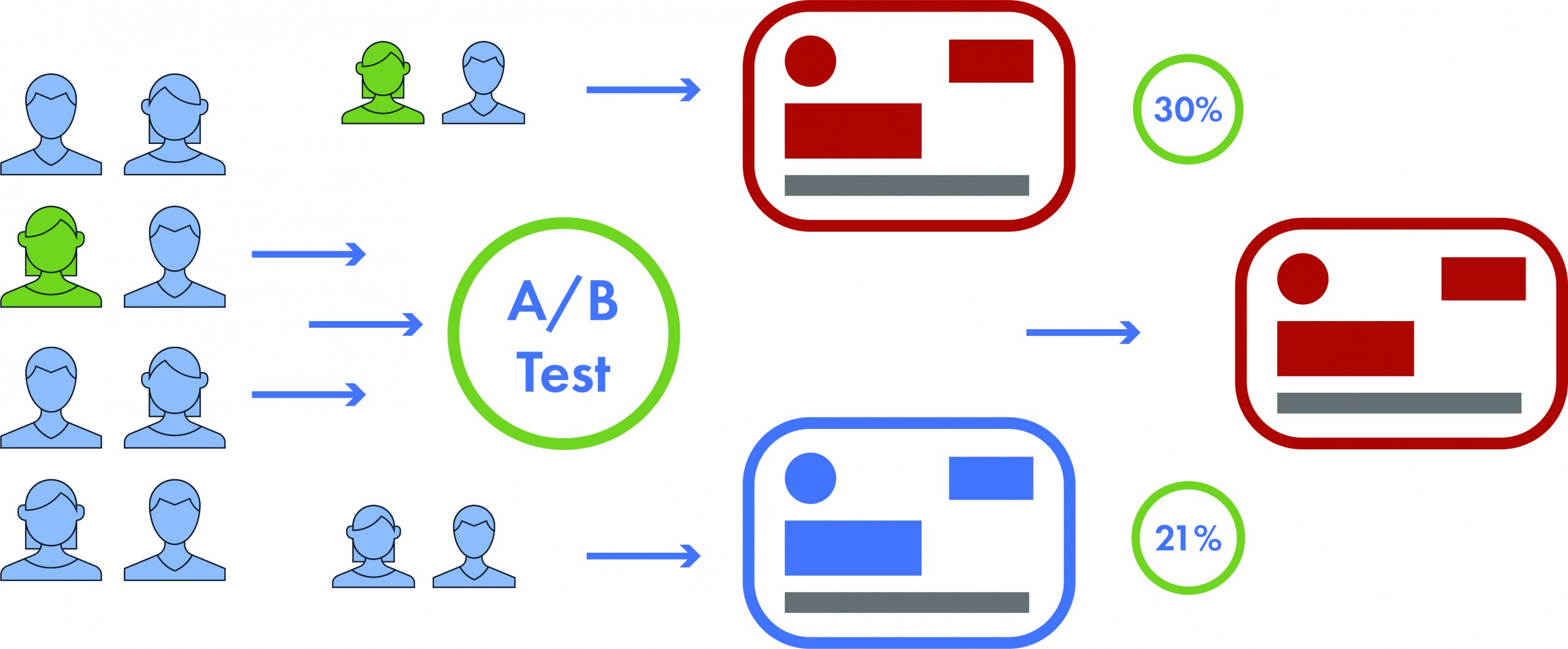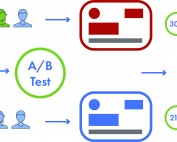Make more effective, data-driven decisions.
Show me the data! Marketing departments these days are all about making evidence-based decisions. And fortunately, digital marketing platforms allow ample opportunity to collect that evidence. A/B testing is one tool that helps marketers maximize their efforts by increasing the efficiency of campaigns.
To run an A/B test on your marketing campaign, create two versions of the same content. Then present these two versions to two like audiences and analyze which performs better. A/B testing can be used in a wide variety of digital media formats including:
- Email campaigns
- Multimedia marketing strategies
- Paid internet advertising
- Newsletters
- Website design
How to Run an A/B Test
- Identify your goal
- Marketers should first identify their goal. For example, you may be aiming to increase web traffic or improve a conversion rate.
- Select a single variable to test
- Marketers must create a hypothesis to test by choosing the variant that will be changed. For example, If your goal is to improve the subscription button use on your website’s homepage, you may hypothesize that a larger subscription button will receive more clicks. Other potential variables might be the color, font, or layout.
- Create a ‘control’ and a ‘challenger’ campaign
- Your ‘control’ is your existing campaign and your ‘challenger’ is the campaign that includes the variant.
- Assign Sample Group A and Sample Group B equally
- Choose the audience that will see your two campaigns. Sample groups for A and B should be the same size and should closely match the audience who will see your final campaign. The more people you test, the more accurate your results will be.
- Choose your metrics
- You will need to determine performance metrics to evaluate and which margins are statistically significant to your decision making process. This requires some basic knowledge of statistics.
- Set the timing & Run test
- Decide how long you need to collect an appropriate amount of data. Remember, both campaigns need to run simultaneously and for the same amount of time.
- Review results
- Communicate the results of your test with stakeholders and make changes to your campaign based on the data.
For example, a company has recently launched a new website. The website’s email subscription button is located in the sidebar of the website, but they have identified a goal of increasing their subscription rate. The marketing team hypothesizes that changing the location of the button to the topbar will increase the click rate. To execute the a/b test, the design creates an alternative version of the website with the button placed in the topbar. Version #1 and version #2 are presented to equal audiences over a one month period and the version that performs better will be utilized moving forward.
Takeaway
A/B Testing provides marketers with real-time data on what their audiences respond to. This powerful information can help both large and small marketing departments improve their effectiveness and maximize results.









